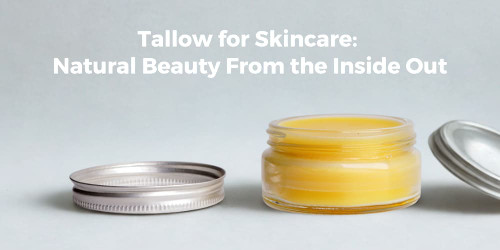Asthma is a chronic respiratory condition that affects many Australians, and managing it effectively often requires the use of an asthma puffer (inhaler). Using a puffer correctly is crucial for ensuring that the medication reaches your lungs where it is needed most. In this article, we will cover everything you need to know about using an asthma puffer, including correct usage techniques, frequency, and essential aftercare.
What is the Correct Way to Use a Puffer?
Using an asthma puffer correctly is key to ensuring the medication is delivered efficiently to your lungs. According to the National Asthma Council Australia (June 2024), the following steps should be followed:
- Shake the Inhaler: Before each use, shake the inhaler well to mix the medication properly (Asthma Australia, June 2024).
- Remove the Cap: Take off the cap from the mouthpiece of the inhaler.
- Breathe Out: Exhale completely to empty your lungs.
- Position the Inhaler: Place the mouthpiece in your mouth, sealing your lips around it.
- Inhale and Press: As you begin to breathe in slowly, press down on the inhaler to release the medication. Continue to breathe in deeply for 3-5 seconds.
- Hold Your Breath: Hold your breath for about 10 seconds to allow the medication to settle in your lungs.
- Exhale Slowly: Breathe out slowly and gently.
How Many Times Should You Use an Asthma Puffer?
The frequency of puffer use depends on the type of inhaler and your specific asthma management plan. Generally, there are two types of inhalers:
- Reliever Inhalers: These are used to relieve asthma symptoms quickly. According to Asthma Australia (June 2024), you should use a reliever inhaler as soon as you notice asthma symptoms. The usual dosage is 1-2 puffs, repeated every 4 hours if needed.
- Preventer Inhalers: These are used daily to prevent asthma symptoms. Typically, the dosage is 1-2 puffs twice a day, but it's crucial to follow your doctor's instructions.
What Happens if You Don't Rinse Your Mouth After an Inhaler?
Failing to rinse your mouth after using a preventer inhaler, which often contains corticosteroids, can lead to oral thrush—a fungal infection in the mouth. The Mayo Clinic (June 2024) recommends rinsing your mouth with water and spitting it out after each use to prevent this condition.
How to Use an Inhaler in Australia
In Australia, asthma management follows guidelines similar to those in other countries but tailored to local health recommendations and environmental factors. Here are a few tips specific to Australians:
- Stay Updated on Pollen Counts: High pollen levels can trigger asthma symptoms. Use resources like theAustralian Pollen Allergen Partnership for current pollen forecasts.
- Understand the Role of Bushfire Smoke: During bushfire season, air quality can deteriorate significantly. Asthma sufferers should stay indoors and use air purifiers if possible.
- Access to Asthma Action Plans: Ensure you have an asthma action plan created in consultation with your healthcare provider. You can download templates fromAsthma Australia.
How to Store and Maintain Your Asthma Puffer
Proper storage and maintenance of your asthma puffer are essential to ensure its effectiveness. According to Asthma Australia (June 2024):
- Storage: Keep your inhaler in a cool, dry place away from direct sunlight and heat sources.
- Cleaning: Clean the mouthpiece regularly by removing it and rinsing it with warm water. Allow it to air dry completely before reattaching it to the inhaler.
- Expiration Date: Check the expiration date on your inhaler and replace it as needed.
Understanding the Different Types of Inhalers
There are various types of inhalers available, each serving a different purpose. According to the National Asthma Council Australia (June 2024):
- Metered Dose Inhalers (MDIs): These are the most common type and deliver a specific amount of medication in aerosol form.
- Dry Powder Inhalers (DPIs): These deliver medication in powder form and require a strong, fast inhalation.
- Nebulisers: These convert liquid medication into a fine mist, suitable for severe asthma attacks or for those who have difficulty using MDIs or DPIs.
Additional Tips for Using an Asthma Puffer
- Spacer Devices: Using a spacer with your puffer can help deliver more medication to your lungs. It’s especially useful for children and elderly patients.
- Regular Checks: Periodically check the expiry date and medication levels in your inhaler to ensure it’s ready for use when needed. Visit your healthcare provider regularly to review your asthma action plan.
- Monitor Symptoms: Keep track of your symptoms and peak flow readings.
- Avoid Triggers: Identify and avoid asthma triggers such as smoke, pollen, and dust.
- Education and Training: Attend asthma education sessions offered by local health services to stay informed about the best practices and new treatments.
For more asthma management products, visitMedCart's Inhaler Collection.
FAQs
How Do I Know If My Puffer Is Working?
If your puffer is working correctly, you should experience relief from asthma symptoms within a few minutes of using it. If you do not feel any improvement or if your symptoms worsen, seek medical advice immediately.
Can I Share My Inhaler with Someone Else?
No, you should never share your inhaler with anyone else. Each inhaler is prescribed specifically for an individual's asthma condition and sharing it can spread germs or result in incorrect dosing.
What Should I Do If I Miss a Dose of My Preventer Inhaler?
If you miss a dose of your preventer inhaler, take it as soon as you remember. However, if it is almost time for your next dose, skip the missed dose and continue with your regular schedule. Do not double the dose.
How Often Should I Replace My Inhaler?
You should replace your inhaler as directed by the expiration date on the device or if it has been used up. An inhaler typically contains a set number of doses, and you should track the number of puffs used to ensure you replace it on time.
Disclaimer
This article is for informational purposes only and does not substitute professional medical advice. Always consult with your healthcare provider for personalised medical advice and treatment plans.
By following these guidelines and using your asthma puffer correctly, you can better manage your asthma and improve your quality of life. Stay informed and proactive about your asthma management to stay ahead of any potential issues.
References
- National Asthma Council Australia, June 2024.
- Australian Institute of Health and Welfare, June 2024.
- Australian Asthma Handbook, June 2024.















